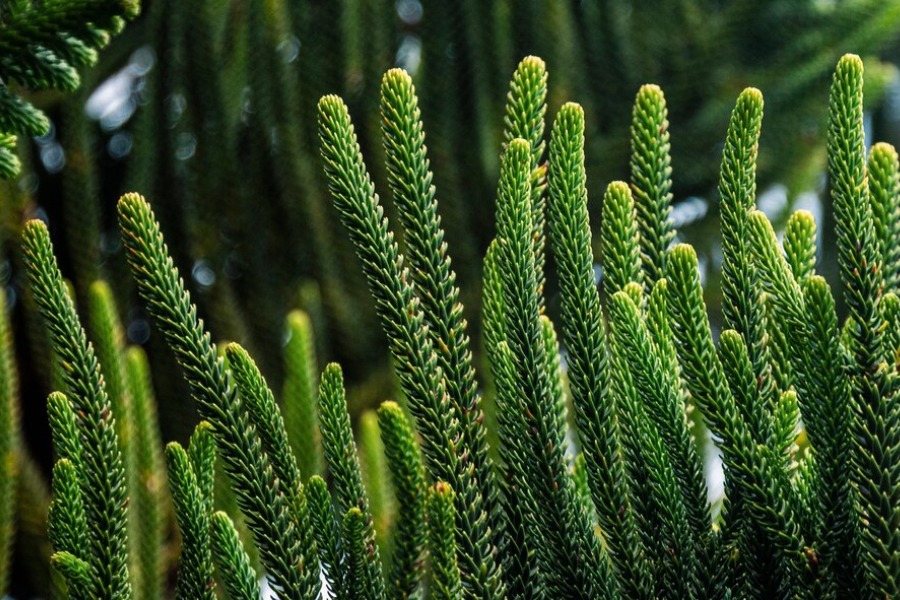The Norfolk Island Pine (Araucaria heterophylla) is a fascinating plant that has intrigued botanists and plant enthusiasts for years. Its unique characteristics often lead to questions about its classification in the plant kingdom, particularly whether it is a monocot or dicot. Understanding this requires exploring its biological traits, evolutionary background, and classification in the broader context of plant taxonomy.is norfolk island pine an monocot or dicot.
What Are Monocots and Dicots?
Before diving into the specifics of the Norfolk Island Pine, let’s clarify what monocots and dicots are. These terms refer to two major groups of flowering plants (angiosperms) that differ in several structural and developmental traits:
- Monocots:
- Have a single cotyledon (seed leaf) in their seeds.
- Exhibit parallel venation in their leaves.
- Possess vascular bundles scattered throughout the stem.
- Typically have floral parts in multiples of three.
- Include plants like grasses, lilies, and palms.
- Dicots:
- Have two cotyledons in their seeds.
- Show net-like venation in their leaves.
- Display vascular bundles arranged in a ring within the stem.
- Usually have floral parts in multiples of four or five.
- Examples include roses, oaks, and beans.
is norfolk island pine an monocot or dicot.These distinctions are central to the classification of flowering plants. However, it is important to note that monocots and dicots belong exclusively to angiosperms, while the Norfolk Island Pine is not an angiosperm.
Norfolk Island Pine: A Conifer, Not an Angiosperm
The Norfolk Island Pine is a coniferous tree, which means it belongs to the gymnosperms, not the angiosperms. Gymnosperms are seed-producing plants that do not form flowers or fruits. Instead, their seeds are often exposed on the surface of cones or other structures. This places the Norfolk Island Pine outside the monocot-dicot classification system.
Characteristics of Gymnosperms
- Seed Structure: Gymnosperms produce naked seeds, which are not enclosed within an ovary.
- Leaf Morphology: Their leaves are often needle-like or scale-like.
- Reproductive Structures: They bear cones instead of flowers.
- Vascular System: Gymnosperms have vascular tissue similar to that of dicots, with xylem and phloem arranged in a ring.
The Norfolk Island Pine’s structural traits align with these gymnosperm characteristics, further confirming its exclusion from the monocot-dicot classification.
Taxonomy and Classification of Norfolk Island Pine
The Norfolk Island Pine belongs to the Araucariaceae family, which is part of the Coniferales order. Its scientific classification is as follows:
- Kingdom: Plantae
- Phylum: Tracheophyta (vascular plants)
- Class: Pinopsida (conifers)
- Order: Coniferales
- Family: Araucariaceae
- Genus: Araucaria
- Species: Araucaria heterophylla
The Araucariaceae family is ancient, dating back to the Jurassic and Cretaceous periods. Members of this family, including the Norfolk Island Pine, are often described as “living fossils” due to their evolutionary longevity and resemblance to prehistoric plants.
Why Is Norfolk Island Pine Not a Monocot or Dicot?
As a gymnosperm, the Norfolk Island Pine diverges significantly from the traits associated with monocots and dicots:
- Seed Structure:
- Unlike angiosperms, which produce seeds enclosed within fruits, gymnosperms like the Norfolk Island Pine produce naked seeds on the surface of cones.
- Leaf Characteristics:
- The Norfolk Island Pine has needle-like leaves, which are distinct from the broad leaves typically associated with dicots and the long, narrow leaves of monocots.
- Reproductive Features:
- It reproduces through cones rather than flowers, a hallmark of gymnosperms.
- Vascular System:
- While the vascular arrangement in gymnosperms may resemble that of dicots, this is not sufficient to classify them as dicots, as they lack other defining traits such as flowers and fruits.
Unique Features of Norfolk Island Pine
The Norfolk Island Pine is renowned for its symmetrical, pyramidal shape and ornamental appeal. Here are some of its distinguishing features:
- Native Habitat: It is indigenous to Norfolk Island, a small territory in the Pacific Ocean between Australia and New Zealand.
- Growth Habit: It can grow up to 200 feet (about 60 meters) in its natural habitat, although it is often cultivated as a smaller indoor plant in pots.
- Evergreen Nature: It retains its foliage year-round, with needle-like leaves that are soft to touch in younger plants.
- Durability: The tree’s wood is valued for its strength and was historically used for shipbuilding.
- Adaptability: It thrives in various climates, making it a popular ornamental plant worldwide.
Importance of Proper Classification
The question of whether the Norfolk Island Pine is a monocot or dicot underscores the importance of understanding plant classification systems. While monocots and dicots are the primary categories for flowering plants, gymnosperms like the Norfolk Island Pine represent a separate lineage within the plant kingdom. Recognizing these distinctions helps avoid confusion and highlights the diversity of plant life.is norfolk island pine an monocot or dicot.
Conclusion
In summary, the Norfolk Island Pine (Araucaria heterophylla) is neither a monocot nor a dicot. It is a gymnosperm, a group of ancient seed plants that predates the evolution of flowering plants. This distinction is essential for accurately understanding its biology and classification. By appreciating its unique characteristics and evolutionary significance, we gain a deeper appreciation for the diversity and complexity of the plant kingdom.
Discover Cutting-Edge Technology Insights and Reviews at xannytechnet.
